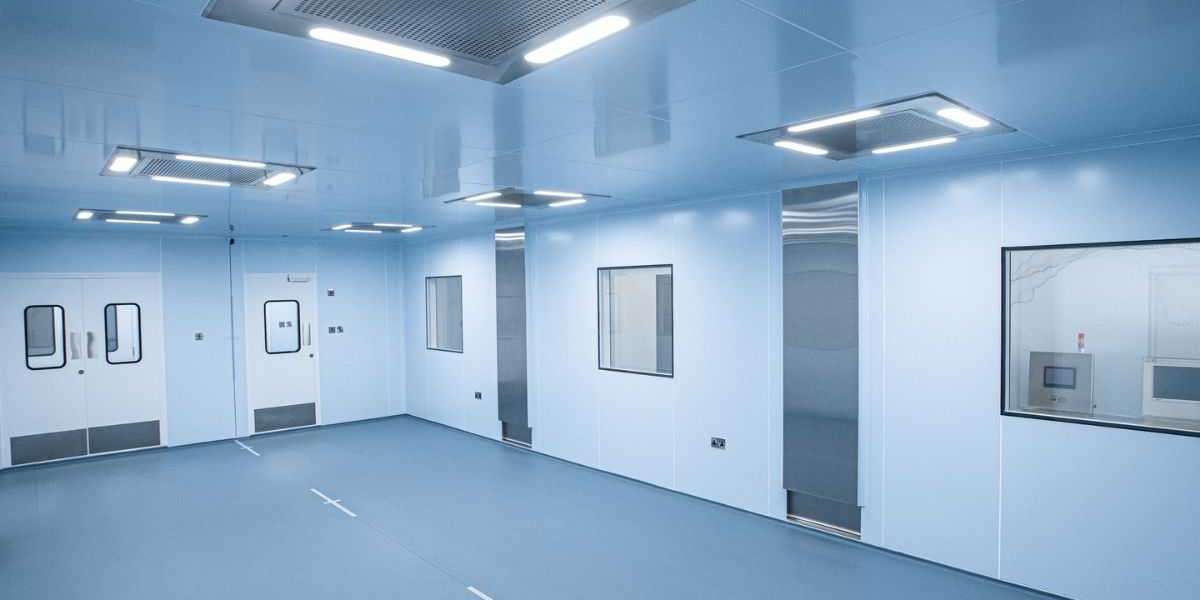Introduction to Modular Cleanrooms
A modular cleanroom is a highly controlled environment designed to regulate contaminants such as dust, airborne particles, and microbes. Unlike traditional cleanrooms, modular cleanrooms are prefabricated and can be assembled, expanded, or relocated with ease. These structures provide an efficient, cost-effective, and scalable solution for industries that require stringent cleanliness standards, such as pharmaceuticals, biotechnology, electronics, aerospace, and healthcare.
Key Advantages of Modular Cleanrooms
1. Customization and Scalability
One of the greatest benefits of modular cleanrooms is their customizable nature. Businesses can design cleanrooms to meet specific ISO classifications, ensuring compliance with regulatory requirements. Moreover, these cleanrooms can be easily expanded or modified to accommodate changing operational needs.
2. Cost-Effectiveness
Traditional cleanrooms require extensive construction and high upfront costs. In contrast, modular cleanrooms significantly reduce construction expenses by utilizing prefabricated panels, quick installation, and minimal structural modifications.
3. Faster Installation and Minimal Downtime
Since modular cleanrooms are pre-engineered, they can be installed within weeks instead of months. This rapid deployment minimizes downtime and allows businesses to maintain productivity while ensuring a controlled environment.
4. Compliance with Cleanroom Standards
Modular cleanrooms meet industry-specific regulatory standards, including:
- ISO 14644-1 Cleanroom Standards
- GMP (Good Manufacturing Practice) Compliance
- USP 797 and USP 800 for Pharmaceutical Applications
- FDA and EU Regulations for Controlled Environments
Components of a Modular Cleanroom
1. Wall and Ceiling Panels
Modular cleanrooms are constructed using high-quality wall and ceiling panels made of materials such as aluminium, stainless steel, or high-pressure laminate. These panels offer superior durability, chemical resistance, and ease of cleaning.
2. HVAC and Filtration Systems
A robust HVAC system with HEPA (High-Efficiency Particulate Air) or ULPA (Ultra-Low Penetration Air) filters ensures that airborne contaminants are efficiently controlled. These filters remove 99.99% of particles down to 0.3 microns, maintaining optimal cleanliness levels.
3. Flooring Options
Seamless epoxy flooring, vinyl, and raised access floors are commonly used in modular cleanrooms to minimize particle accumulation and facilitate easy cleaning.
4. Airlocks and Gowning Areas
To prevent contamination, airlocks and gowning rooms are incorporated into modular cleanroom designs. These controlled entry points ensure that personnel adhere to strict contamination control procedures.
5. Lighting and Electrical Systems
Energy-efficient LED lighting provides consistent illumination without generating excess heat. Modular cleanrooms also include integrated power and data outlets for seamless operation of laboratory equipment.
Applications of Modular Cleanrooms
1. Pharmaceutical and Biotech Industry
Modular cleanrooms play a crucial role in pharmaceutical manufacturing, research, and drug development. These controlled environments prevent contamination, ensuring compliance with FDA and GMP guidelines.
2. Electronics and Semiconductor Manufacturing
The semiconductor industry demands ultra-clean environments to prevent defects in microchips and circuit boards. ISO Class 5 to Class 8 cleanrooms are commonly used in this sector.
3. Aerospace and Defense
Aerospace manufacturers require contamination-free environments for the precision assembly of components. Modular cleanrooms ensure that aircraft and spacecraft components meet strict quality standards.
4. Healthcare and Medical Device Production
Medical device manufacturers must adhere to ISO 13485 and FDA regulations to produce sterile instruments. Modular cleanrooms provide a controlled environment that ensures product safety.
5. Food and Beverage Industry
Cleanrooms are utilized in the food industry to maintain hygiene standards in packaging, bottling, and processing. Modular cleanrooms help reduce the risk of contamination and bacterial growth.
How to Choose the Right Modular Cleanroom
1. Determine Cleanroom Classification
Select the appropriate ISO classification based on industry standards. For example:
- ISO Class 5 for semiconductor manufacturing
- ISO Class 7 for pharmaceutical applications
- ISO Class 8 for general industrial applications
2. Assess Facility Space and Layout
Evaluate available space and consider future expansion when designing a modular cleanroom. Modular designs allow for flexible configurations that can be easily adapted as operational needs evolve.
3. Choose the Right Air Filtration System
Invest in high-efficiency HEPA or ULPA filters to maintain the required air cleanliness level. Consider airflow patterns such as laminar or turbulent flow, depending on the application.
4. Ensure Regulatory Compliance
Compliance with ISO, FDA, GMP, and industry-specific regulations is essential to ensure quality and avoid costly penalties.
5. Work with a Reputable Cleanroom Manufacturer
Selecting a trusted cleanroom manufacturer ensures high-quality materials, professional installation, and compliance with stringent standards.
Conclusion
Modular cleanrooms are the ideal solution for industries requiring controlled environments with stringent cleanliness standards. Their customizable, cost-effective, and scalable nature makes them an attractive alternative to traditional cleanroom constructions. By selecting the right cleanroom classification, filtration system, and layout, businesses can maintain optimal production standards while ensuring compliance with industry regulations.







